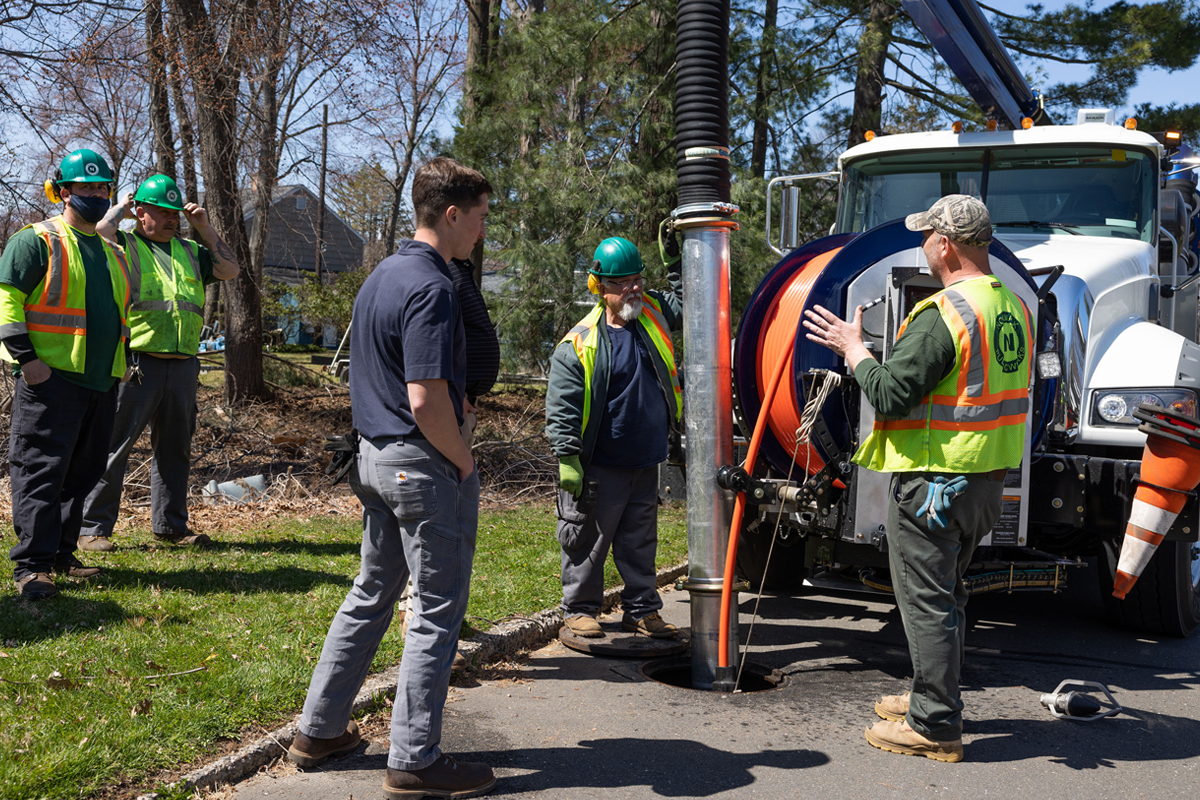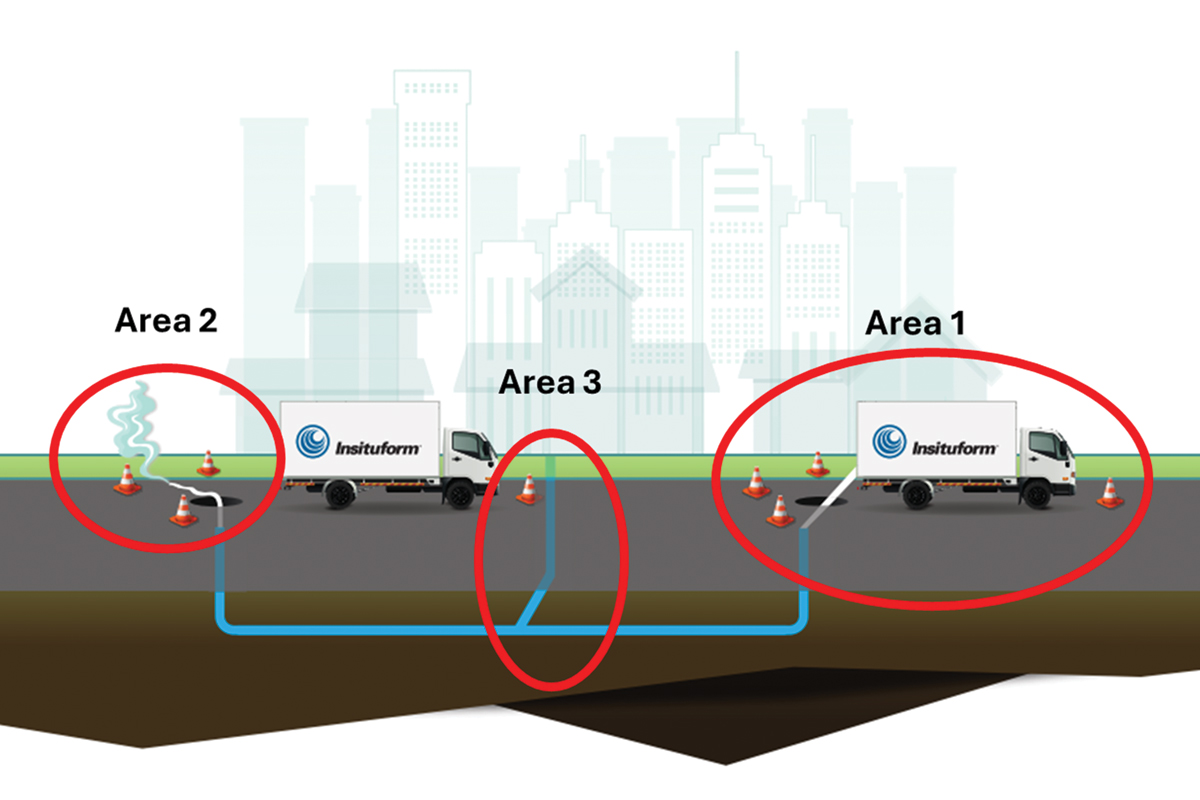Improving Management of Liquid HDD Waste
October 27, 2011
 The cost-effective management of horizontal directional drilling (HDD) waste fluid is an ongoing issue in all jurisdictions as environmental regulatory agencies continue to address liquid waste issues that can have a detrimental impact on water sources.
The cost-effective management of horizontal directional drilling (HDD) waste fluid is an ongoing issue in all jurisdictions as environmental regulatory agencies continue to address liquid waste issues that can have a detrimental impact on water sources. The conventional methods used to manage liquid HDD waste add to project costs with vacuum truck transportation and demurrage, disposal option availability and disposal fees — all of which can vary significantly depending upon the location and complexity of the project.
Case Study: London North Reinforcement for Union Gas
Allstream Waste Solutions Inc ( Allstream) located in Komoka, Ontario, Canada, implemented MetaFLO liquid waste solidification technology to establish a treatment method for managing drill waste fluids that significantly reduced vacuum truck requirements for fluid removal and transportation costs by solidifying this material onsite within the parameters of the drill site. Allstream has the required Certificate of Approval from the Ontario Ministry of the Environment (MOE) for a Mobile Waste Management System. This allows Allstream to mobilize to the specific jobsite to treat the liquid waste and then use dump trucks for local solids disposal.
This case study demonstrates the process and benefits of the onsite treatment of waste drill slurry.
Project Description:
The North London, Union Gas Reinforcement project was undertaken by a local HDD contractor. The project required the installation of 8,000 yards of 8-in., high-pressure natural gas pipeline along Wonderland Road to act as a third natural gas feed into London, Ontario. Due to pending future road construction and the location of existing utilities, most of the project (approximately 6,600 yards) had to be installed using horizontal directional drilling methods.
To effectively manage fluid costs, Allstream used a site that was central to the project and was selected for both fluid recycling and waste fluid solidification. Vacuum trucks collected the HDD fluids from the multiple drill locations and transported the material by truck in an under five-minute drive, to the central processing site.
Waste Fluid Expectations
Depending on the mud weight, the fluid was either recycled for reuse or solidified for disposal. Approximately 2,000 cubic yds of waste slurry was solidified and disposed of on this project
Background
Allstream identified an industrial site central to the established parameters of the work site for the project. This industrial designation is a requirement in Ontario for the Ministry of the Environment (MOE) to receive/process liquid industrial waste streams. In most jurisdictions, anytime a substance is added to water in an industrial process to assist in drilling (such as polymers or bentonite), the fluid becomes a “liquid industrial waste.” The MOE allows vacuum trucks to transport this classified fluid, unmanifested, along the length of the designated HDD project.
Analysis was done in advance to evaluate the waste stream for compliance with MOE’s Table 1 criteria* and to determine disposal options.
Centralized Site:
Allstream mobilized a truck and trailer onsite that contained Allstream’s MetaFLO PDM high-shear mixing equipment, hydrocyclone reclamation unit and reagent chemistry containment.
Two 10,000-gal tanks were recessed into the ground for fluid containment with a third to contain the treated discharged material for disposal.
Vacuum trucks off-loaded the liquid waste into the containment tanks, where a trash pump moved the fluid to the shaker bed where larger debris was removed.
The screened liquid was pumped through the MetaFLO mixing unit where the solidification reagent was sheared into the fluid at a dosage rate of between 1 and 2 percent wt (determined by mud weight).
The treated material was then discharged into the disposal containment tank.
 One of the recessed receiving tanks was separated into two compartments to allow for lighter drill slurry to be contained, recycled and stored for reuse.
One of the recessed receiving tanks was separated into two compartments to allow for lighter drill slurry to be contained, recycled and stored for reuse. A tanker truck was used for returning recycled water back for reuse at the drill site to optimize bentonite consumption and conserve water.
Solidification Process
Allstream processed the waste fluid through their MetaFLO PDM mixing unit at a rate of between 82 and 95 U.S. gallons per minute (5,310 gallons/hour) and easily managed the peak-day requirements exceeding 30,000 U.S. gallons.
The drill slurry treated with the MetaFLO solidification reagent set up to meet slump requirements in just a few minutes. When the discharged containment tank was full, an excavator was used to load the treated material into a dump truck and the solid material was transported to a local disposal site.
Two Allstream operators are required to manage the process — one to manage the mixing equipment and shakerbed and the other for staging, removing the solidified material from the discharge tank, facilitating the vacuum trucks off loading and pumping recycled water into the water tanker for use at the drill sites.
Benefits
- Central collection site allowed for optimal vacuum truck use and easy access to recycled fluids
- Solidification of the drill waste provided greater disposal options and reduced transport costs
- Met regulatory environmental protocols for the waste generator
- Fewer trucks meant less disruption
- Process was fast, clean, organized and regulation-compliant
Andrew McNabb is president and CEO of MetaFLO Technologies.
(*Table 1 criteria: Soil, Ground Water and Sediment Standards for Use Under Part XV.1 of the Environmental Protection Act, Ontario Ministry of Environment)




